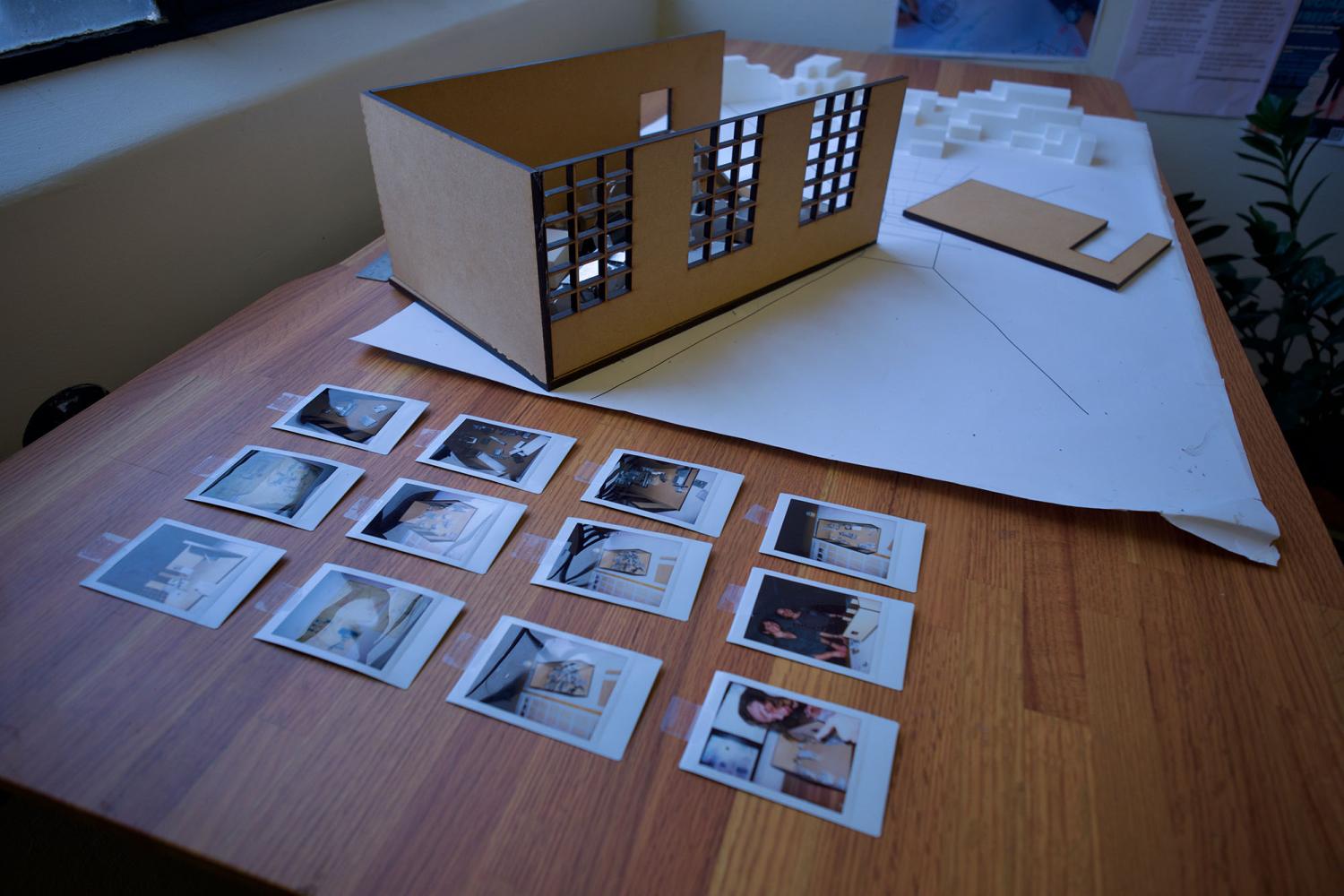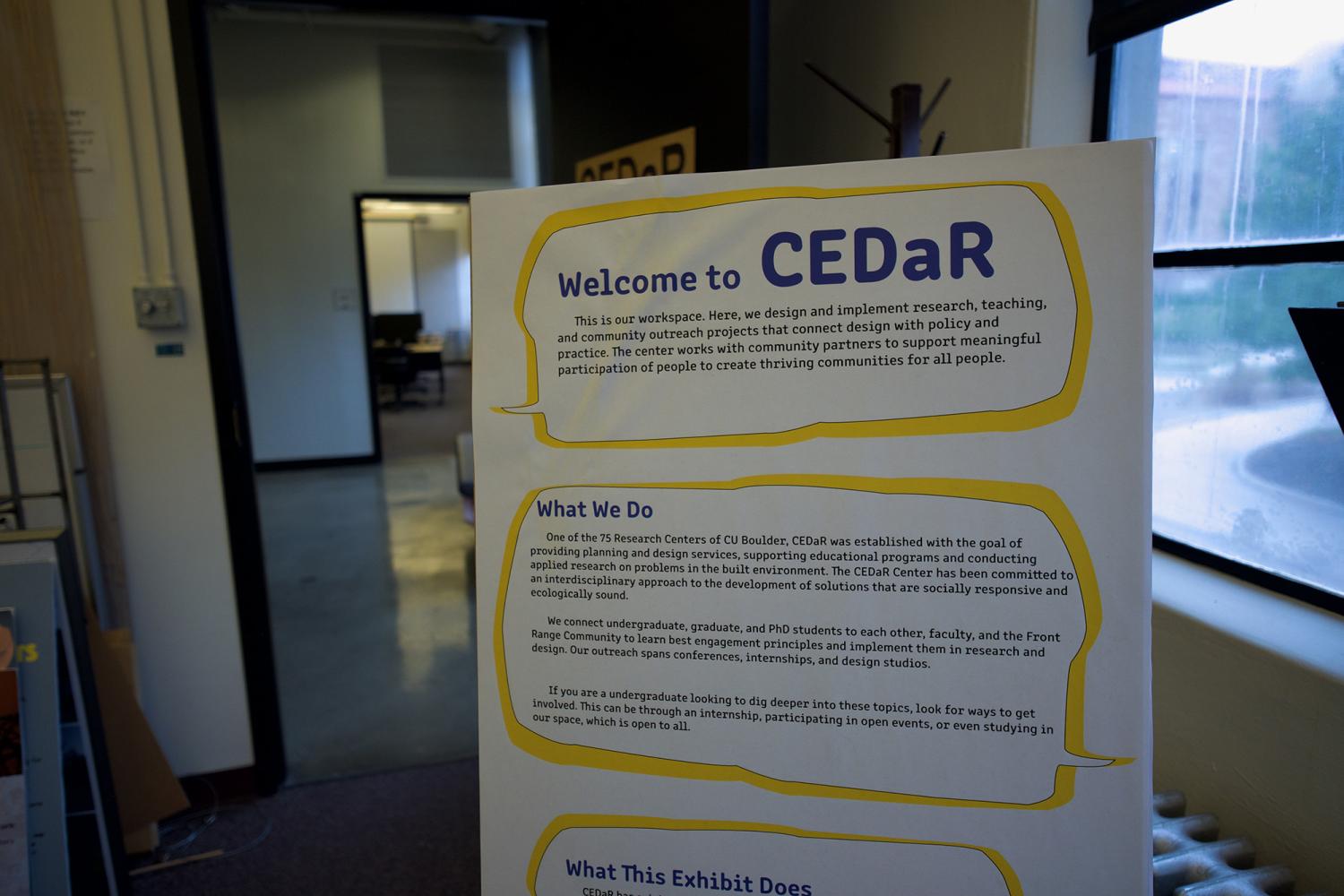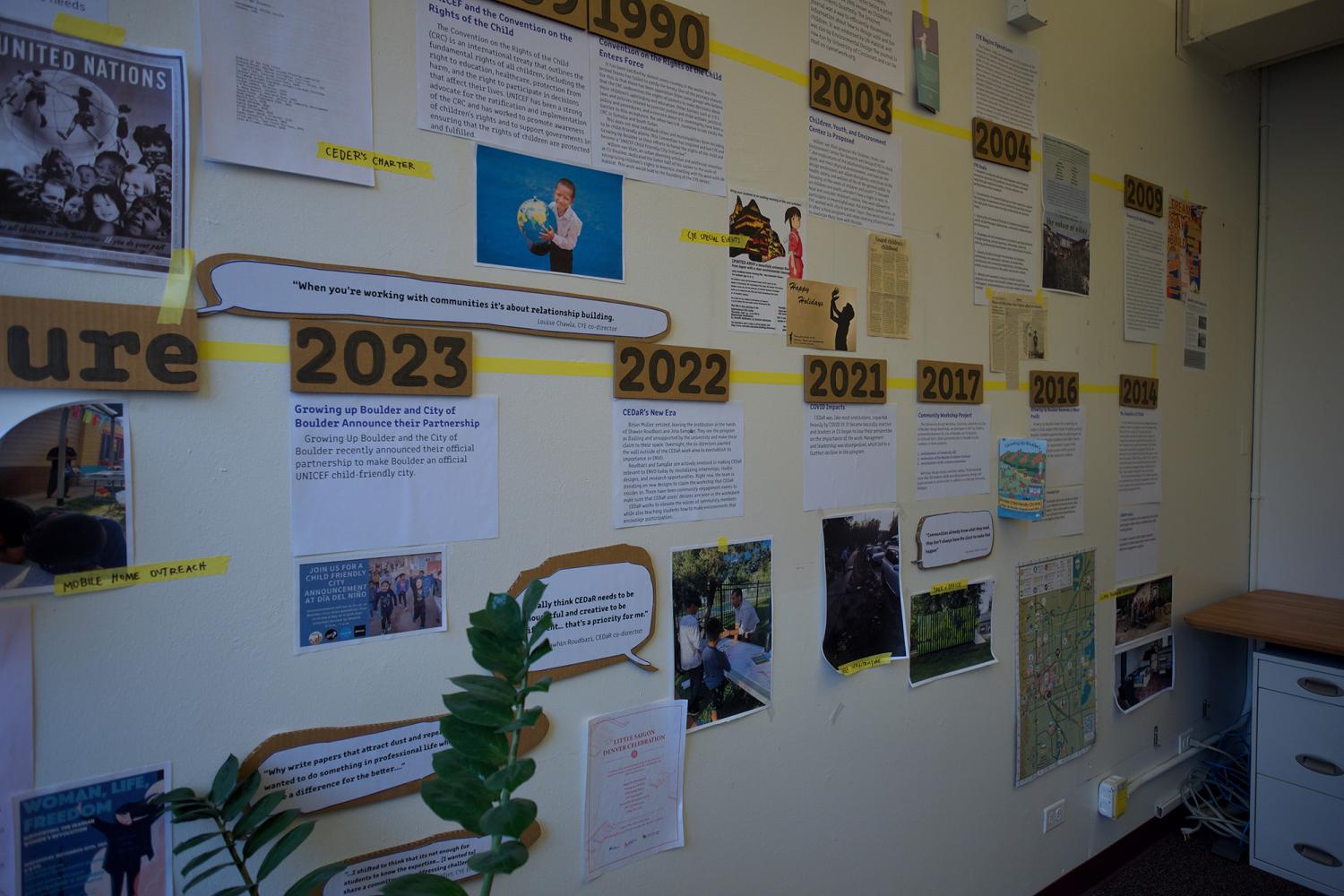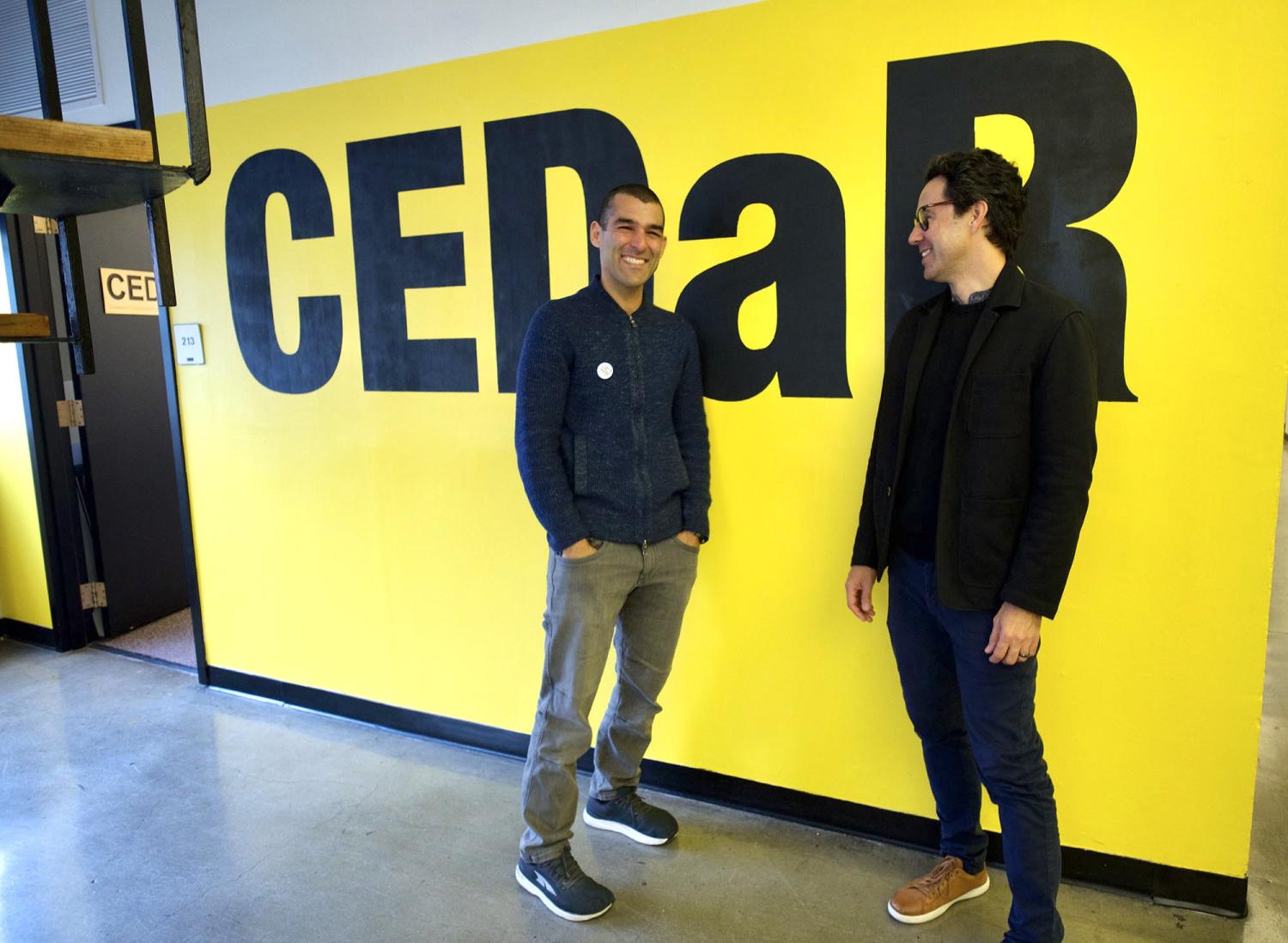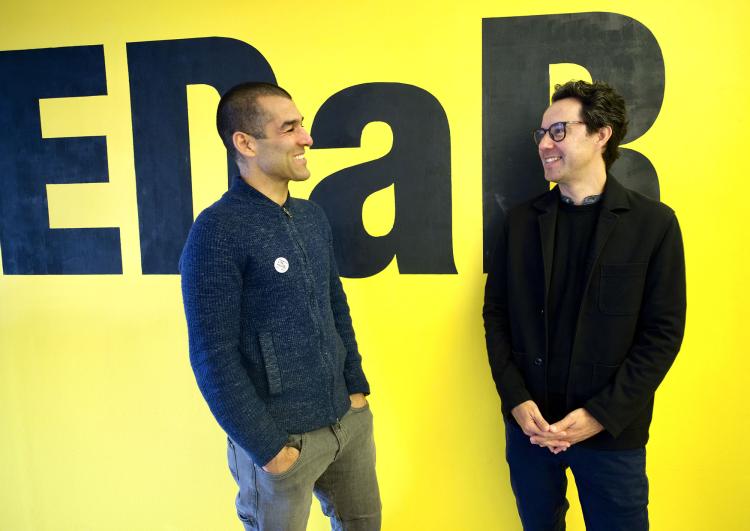 With its bright yellow walls and large black lettering, the Community Engagement, Design and Research Center (CEDaR) in the Environmental Design building is hard to miss. But with a single door and no indoor windows to reveal the room’s inner workings, the mystery surrounding what goes on behind those walls is palpable. “The space is a little bit closed right now,” Shawhin Roudbari, ENVD assistant professor and CEDaR’s co-director said. “Even if the yellow is very calling and is screaming ‘yes CEDaR is here!’ it still doesn’t open the doors.”
With its bright yellow walls and large black lettering, the Community Engagement, Design and Research Center (CEDaR) in the Environmental Design building is hard to miss. But with a single door and no indoor windows to reveal the room’s inner workings, the mystery surrounding what goes on behind those walls is palpable. “The space is a little bit closed right now,” Shawhin Roudbari, ENVD assistant professor and CEDaR’s co-director said. “Even if the yellow is very calling and is screaming ‘yes CEDaR is here!’ it still doesn’t open the doors.”
One way to open the doors might be to redesign them.
CEDaR is one of 75 research hubs housed within the CU Boulder campus community and is the only one that has a direct relationship with the Program in Environmental Design (ENVD). Through community-oriented services and projects, the center fosters innovative research and education around critical urban challenges. “CEDaR has a long history of engagement,” Jota Samper, ENVD assistant professor and Roudbari’s co-director of CEDaR explained. “What we’re trying to do is connect academic research and environmental design with our communities.”
CEDaR also strives to engage directly with design students by bringing them on as research assistants and including them in community collaborations. During the 2022-2023 academic year, the Center hired over a dozen students and funded projects centered around transformative urban design, cultural geography and participatory, anti-racist planning. “It’s a unique opportunity for undergrads to participate in this kind of work. It’s really rare,” Roudbari expressed.
But despite the Center’s long history and active engagement practices, Roudbari noted that most ENVD students may be unfamiliar with CEDaR and its work. When he and Samper first began their careers at ENVD seven years ago, CEDaR was a “thriving, upcoming place.” The COVID-19 pandemic, however, diminished the capacity of the Center to engage with both the community at large and the students within the program.
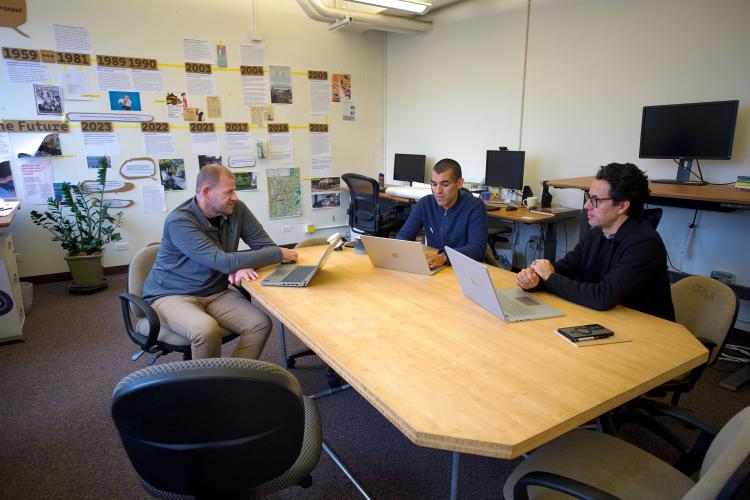 Over the past year, the two directors have been working to rebuild momentum lost during the pandemic and reorient the Center in a new direction. They’ve secured a permanent home for CEDaR in ENVD 213, put in a small amount of “elbow-grease” and “DIY-renovation" work and have been actively socializing the space. But they also have aspirations to make the space even better.
Over the past year, the two directors have been working to rebuild momentum lost during the pandemic and reorient the Center in a new direction. They’ve secured a permanent home for CEDaR in ENVD 213, put in a small amount of “elbow-grease” and “DIY-renovation" work and have been actively socializing the space. But they also have aspirations to make the space even better.
After receiving a grant through the Undergraduate Research Opportunity Program (UROP), the Center funded initial research to collect input on what a redesign of the space might look like. The research involved gathering ideas and feedback through workshops both within the ENVD community and through engagement with outside architects, professors and students. Significantly, student assistants have been key in leading this research and compiling potential design plans to present to donors in order to make the redesign feasible.
The second phase of the project will involve workshops, prototyping and implementation. “We want a space that is flexible, transformable and open,” Samper noted. “Furniture that ensures the space is open to big meetings with room for workstations for all of our research assistants and ourselves.” The directors hope that the newly designed space will serve as an intermediate between a classroom and a meeting room—a place that captures CEDaR’s mission to integrate student and faculty interactions into meaningful community design work.
Among their external projects, the folks at CEDaR aim to play a more active role in evolving the culture around research and engagement within the ENVD community. Through open monthly meetings, CEDaR will continue to be a place to discuss pressing urban issues, host research workshops and create community-informed designs. The CEDaR directors hope that the redesign process, and perhaps knocking down a few bright yellow walls, will help make these efforts a little more visible.


